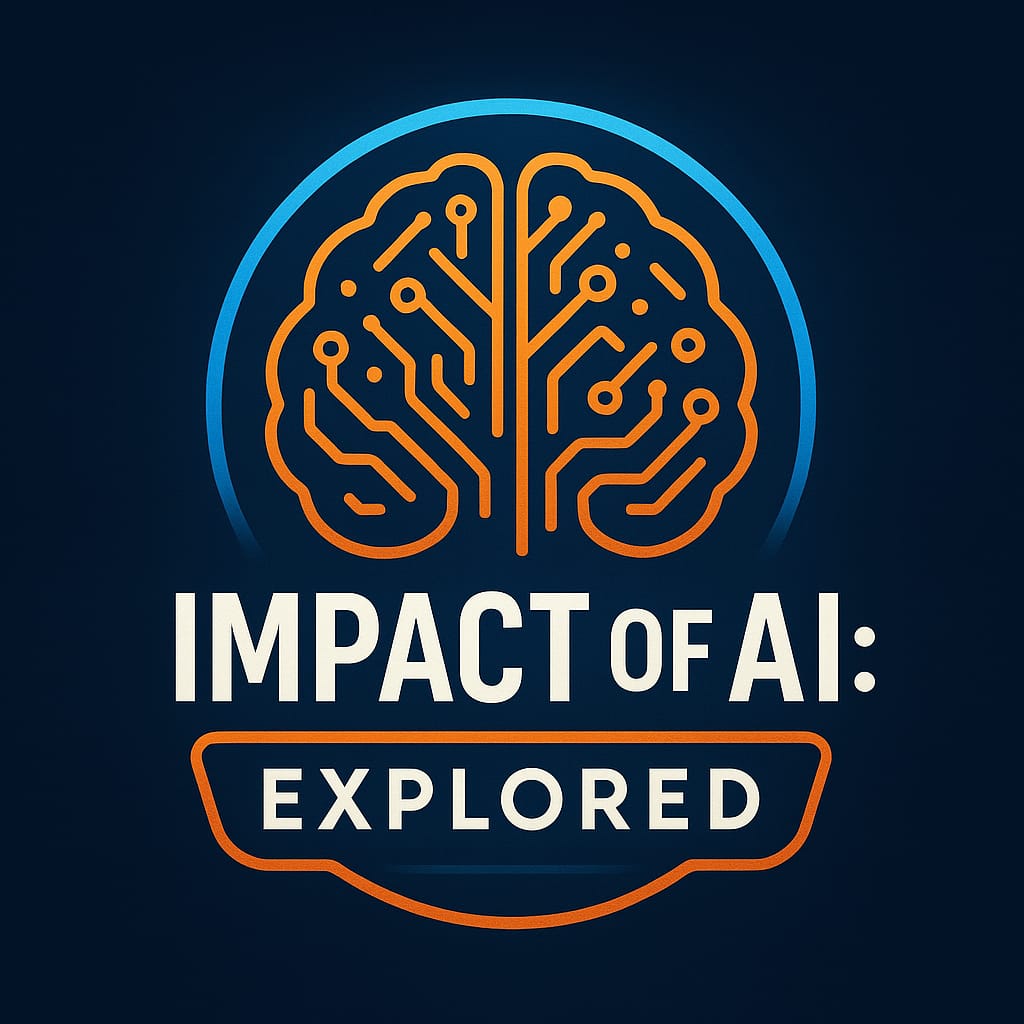1. Introduction
Welcome to the latest episode of Impact of AI Explored! This edition features us, James O’Regan and Gerjon Kunst, joined by a special guest: Ronni Holmvig Strøm, a management consultant with deep expertise in digital transformation and AI strategy. In this episode, we dive into what it takes for organizations to move from AI talk to tangible results, why design thinking matters in this journey, and how to build adoption for AI initiatives.
You can find the episode here:
Youtube: https://youtu.be/2kmGJjeWb8Q
Buzzsprout: https://www.buzzsprout.com/2317233/episodes/17521278
Or your favourite streaming platform.
2. Meet the Guest
Ronni Holmvig Strøm is a management consultant with over 20 years of experience helping companies across industries shape and execute digital strategies. His career spans successful transformations triggered by mergers, tech disruptions, and new frameworks like Agile. Ronni operates as a “Swiss army knife” for businesses, combining strategic vision and hands-on facilitation. He’s known for applying design thinking to digital challenges and has recently focused on guiding organizations in leveraging AI—from the early hype of generative models to grounded, actionable business experimentation.
3. Setting the Stage
AI is everywhere: on strategic agendas, in boardroom discussions, and splashed across social feeds. But hype doesn’t guarantee success—making sense of AI and extracting real value is what separates innovators from those left behind. In this blog, you’ll learn why design-led AI adoption is critical, how organizations stall, and what it takes to move the needle. Whether you’re a CEO, strategist, or tech enthusiast, the lessons here apply to anyone navigating the future of business and technology.
4. Episode Highlights
- Turning Hype into Strategy: “At the peak of the hype curve, FOMO—fear of missing out—was extremely apparent… But putting AI on the agenda without clarity leaves companies stuck.”
- Trust and Adoption Challenges: “You can have the flashiest AI tools, but skip the boring data work and you’re headed for disaster. Adoption hinges on solving real pain points first.”
5. Deep Dive: Groundedness in AI—Why It Matters
Ronni reflects on the journey from AI hype to meaningful experimentation:
- Early AI projects often stalled because they were vague or built from recycled frameworks that didn’t fit.
- True innovation comes from design thinking: mapping pain points, turning them into opportunity spaces, and testing rapidly with end users.
- Design-led strategies avoid “tick-the-box” solutions—like blindly implementing Copilot—and instead focus on measurable, validated business outcomes.
- Grounded adoption means setting “guardrails,” educating teams on what AI is (and isn’t), and running experiments with tangible feedback from those who will actually use the technology.
6. Real-Life Stories & Examples
- Ronni describes a workshop with Ceramic Speed, where mapping pain points across the entire company led to 5–6 actionable AI ideas—not fluffy concepts, but solutions with immediate business impact.
- In healthcare, removing the most hated manual task by introducing AI dramatically increased user buy-in and drove successful adoption.
- Engineering firm examples show how AI can save hundreds of thousands of euros per day through ML-powered predictions—like scheduling maintenance for wind turbines using weather and wave data, and deploying drones for data collection.
7. Key Takeaways
- Design thinking drives AI adoption—start with pain points, not technology.
- Experiment fast: build, test, validate, iterate.
- Adoption relies on buy-in from real end users, not just leadership.
- Guardrails and clear frameworks build trust in AI solutions.
- Data quality is foundational; skipping it leads to project failure.
- Measuring real business value early prevents “AI strategy fatigue.”
8. Closing Thoughts
Reflecting on this episode, we’re reminded that solving real problems with AI takes more than hype—it needs clarity, collaboration, and rapid experiments. As AI agents and advanced applications push forward, organizations that succeed will be those who combine strategy with design thinking and honest feedback. If you found the discussion useful, let us know your thoughts—and stay tuned for our next episode, where we’ll explore the evolving landscape of AI accountability and human–machine collaboration.

